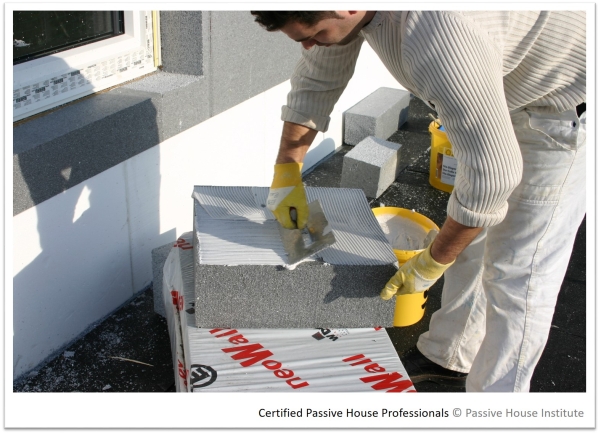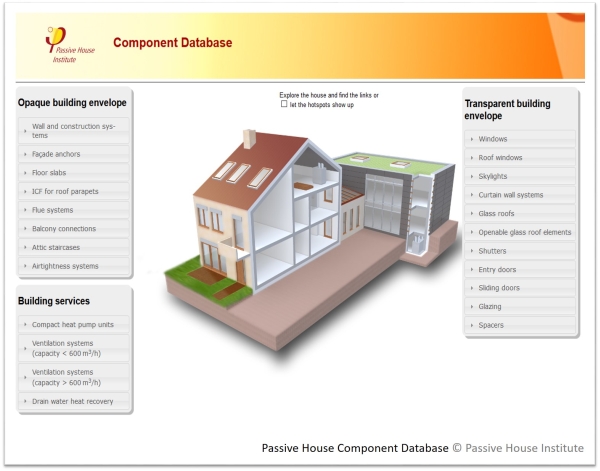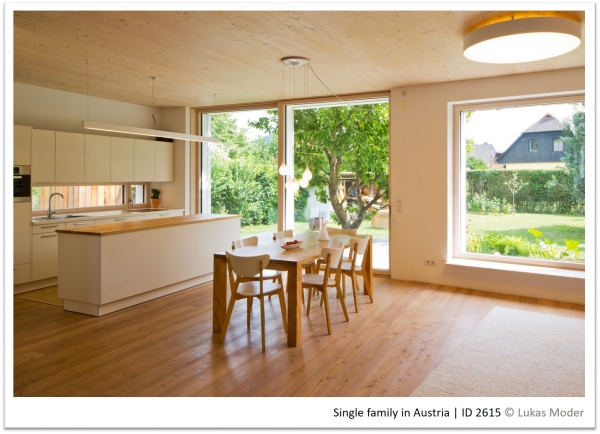4. No performance gap
| Site: | Passive House Online Training | Passive House Institute |
| Course: | Passive House for Decision makers |
| Book: | 4. No performance gap |
| Printed by: | Guest user |
| Date: | Wednesday, 15 October 2025, 6:32 PM |
1 - Video presentation
TRANSCRIPT
Anybody can build a Passive House, because the standard is not trademarked. But how can you check that a building is a real Passive House? And how to be sure that it will perform as planned and deliver its promises?
Well, ask for third-party quality assurance! That is our main job as an independant research institute. Beside research projects and software development, we are certifying Passive House professionals, suitable components and assessing the performance of buildings worldwide.
Do you want a Passive House building? Then your project team should contact the closest PH designer or consultant. He will guide you right from the start, when changes are easy to make and cost-efficient solutions can be found.
They will plan and optimize your project with PHPP and designPH. These tools are continuously being improved thanks to monitoring data and dynamic simulation. The energy demand calculated with PHPP is very close to the measured consumption detected in monitoring projects. The more efficient the building, the lower the deviations.
During the design process, your team will select high quality components according to the local climate.
But the best design is worthless without top quality construction work. Certified Passive House tradespeople will ensure energy efficiency targets are met.
Hang on, we are almost there! Now a PH certifier will check the PHPP, design documents and building site records to ensure the Passive House criteria are met. The Passive House international criteria are defined numerical values, which are based on the laws of physics. If all criteria are met both in PHPP and on the building site, then your building can be certified!
Once the building is certified, residents can peacefully move in and enjoy their new quality of life. Be it in a new building or in a retrofitted one, they will experience similar benefits!
2 - Further material
Certified Passive House professionals
Good planning as well as careful execution of the details is essential in the construction of Passive House buildings. This ensures that the high requirements for the building envelope and technology can be met. That is why designers, specialist planners and tradespeople need additional expertise, which can be acquired and substantiated with the Certified Passive House training courses.
To find a Passive House professional in your region, check out these maps:
Certified Passive House components
The Passive House Standard is achieved by means of highly efficient building systems, careful planning and highly efficient components, which are generally two to three times more efficient than commonly used products. This high level of efficiency is critical to achieving the Passive House Standard. However, it is often very difficult for the designer to assess the energy-efficiency, durability and the necessary energy parameters of a component. The available standard parameters are frequently unrealistic or not accurate enough.
As an independent authority, the Passive House Institute tests and certifies products in respect of their suitability for use in Passive Houses. Certified products have been tested according to uniform criteria; they are comparable in terms of their specific values and are of excellent quality regarding energy efficiency. Their use is not mandatory, but facilitates the designer’s task and helps significantly to ensure the faultless functioning of the resultant Passive House.
Certified Passive House buildings
By certifying your Passive House building, you are assured that the agreed-upon energy standard will actually be achieved. Certification prevents errors thanks to a thorough external checking of planning prior to the start of construction. In addition, your building increases in property value through independent quality assessment.
For building certification, planning execution is checked carefully and comprehensively by an accredited Passive House building certifiers. Other documentation relating to the construction such as the airtightness test complete the quality assurance process. A certificate is only issued if the exactly defined Passive House certification criteria have been met without exception.
PHPP and designPH
The Passive House Planning Package contains everything necessary for designing a properly functioning Passive House. It prepares an energy balance and calculates the annual energy demand of the building based on user input relating to the building's characteristics.
PHPP consists of a software programme and a printed manual, that can be used all over the world and are now available in several languages. It is not a black box: users can see which formulas are used and which building's characteristics should be improved. Moreover, PHPP is continuously being validated and expanded in line with measured values and new findings.
And to make your life easier, have a look at the plugin designPH, the graphical interface for PHPP! Some of its many advantages are listed on this designPH.org.



